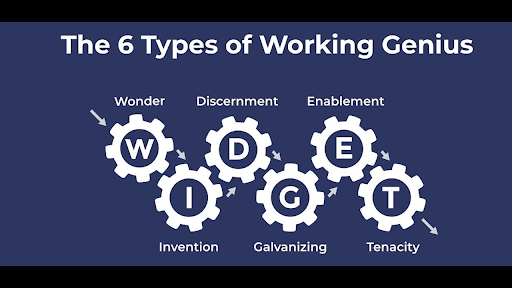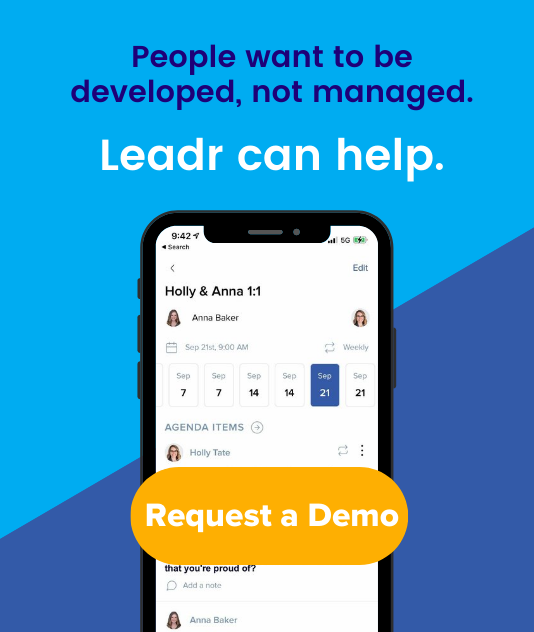Put Patrick Lencioni’s The Advantage Into Practice: Running Effective Team Meetings
Team meetings are critical to team clarity and success. But learning how to effectively run a team meeting for the results you want can be frustrating.
Patrick Lencioni, renowned author and leadership guru, has outlined the principles of successful team meetings in his book, 'The Advantage.'
If you’re looking to apply the principles from The Advantage into your team meetings, we’re going to walk you through the process step-by-step.
We even have a free team meeting template so you can remember and apply the process easily.
Before we dive into the meeting itself, let’s lay the foundation.
Step 1 - Set your thematic goal
A thematic goal is the overriding number one objective of your entire company. As Lencioni says in The Advantage, “Every organization, if it wants to create a sense of alignment and focus, must have a single top priority within a given period of time.”
That’s where the thematic goal comes into play.
The thematic goal can also be known as a “Rallying Cry,” because you are rallying your organization around a singular focus. This goal should be determined by executives and cascaded all the way down the org chart to help everyone align on the most important thing.
Thematic goals typically stay in place for about 3-6 months, so keep that timeframe in mind as you’re setting your foundation.
How does this tie into meetings? Every successful team meeting should center around topics related to your thematic goal. This goal serves as the guiding light for the entire meeting, ensuring that everyone is aligned and focused on the same objective.
Note: Thematic goals are not your organization’s mission. They’re the means to achieving the mission in a certain season. Whether that’s ramping up revenue, improving the customer experience, or building systems within your organization, your thematic goal will touch every department.
Step 2- Determine your defining objectives and standard operating objectives
Once you know where your organization is headed, it’s time to break down how you’ll achieve your thematic goal.What is a Defining Objective?
Let’s use the example from The Advantage. If your thematic goal is rebuilding credibility within the business, then your defining objectives might be:
- Deliver on current commitments
- Identify strategic initiatives
- Eliminate intradepartmental silos
- Improve communication with stakeholders
What is a Standard Operating Objective?
For example, a company might have the following standard operating objectives:
- System reliability
- Network security
- Business unit satisfaction
- On-time project delivery
- Staff morale
Step 3 - Get the meeting on the calendar and stick to it
Tip: Choose a meeting time based on when most of your team feels energized. Send out a survey to determine whether Monday afternoons, Friday mornings, or somewhere in between is most effective for the most amount of people.
Step 4 - Set the meeting agenda
-
Start with your Rally Cry & Lightning Round
Have each team member share or jot down what they’re working on related to the Thematic Goal. This helps hold everyone accountable to the goal and drives the agenda for the meeting.
-
Stay aligned by using a shared agenda
-
Break up the meeting by objectives
Defining Objectives and Standard Operating Objectives should be updated before or at the beginning of the meeting with a red/yellow/green indicator (Green = on track, Yellow = running behind, Red = stuck or road blocked).
Objectives that are green shouldn’t take up any or much time in the meeting since you’re on track. Yellow and red objectives should be the topics of conversation so you can unblock any priorities that are stuck.
-
Prioritize time Management
The parking lot should be a visible place on your shared agenda. That way, at the end of the meeting, all follow up action items are in one spot.
-
End with parking lot review
Step 5 - Implement The Working Genius
1. Use the WIDGET Framework for each agenda item. To maintain focus and clarity during the meeting, ensure that each agenda item is labeled with a clear goal using the WIDGET framework.

This helps everyone understand the purpose and desired outcome of each discussion point. Is the purpose of each agenda item to WID (wonder, ideate, and discern) or are they actionable GET (galvanization, enablement, and tenacity) items?

2. Understand the Working Genius of each team member. Understanding the unique Working Genius of each team member is crucial for effective communication during the meeting. Recognize and leverage each person's strengths to enhance collaboration, speed up decision-making, and reduce misunderstandings.
.png?width=536&height=609&name=image%20(28).png)
Within the The Leadr Advantage, we map out your team’s Working Genius for you to make it that much easier to connect and collaborate.
Step 6 - End of Meeting Discipline
- What did we decide?
- Who will do what?
- What do we need to cascade? Who needs to know?
- What won't we share?
If you use the “parking lot” method mentioned above, you should have all of your action items and future meetings in one spot, making this a smooth process.
By following these six steps, you can transform your team meetings into highly productive and focused sessions that align with Patrick Lencioni's principles from 'The Advantage.' This framework is effective for leadership team meetings down to individual contributor alignment sessions.
Make the Weekly Tactical Meeting even easier by taking it digital. With the Leadr Advantage, you can reinforce clarity, lead effective meetings, keep your teams Working Genius front and center, and more. Let us show you how it works.
Share this
You May Also Like
These Related Stories

From Wonder to Tenacity: Embracing Patrick Lencioni’s 6 Working Geniuses for Effective Work

Navigating Politics in the Workplace: Apply Patrick Lencioni’s Insights With Leadr Advantage




.png?width=2219&height=1580&name=TGX%20Team%20Meeting%20(3).png)



Comments (1)